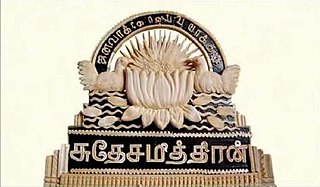
Swadesamitran was a Tamil language newspaper that was published from the then Madras city from 1882 to 1985. One of the earliest Tamil newspapers and the longest in print, Swadesamitran was founded by Indian nationalist G. Subramania Iyer four years after he had started The Hindu. The newspaper was sold to A. Rangaswami Iyengar of the Kasturi family in 1915 and the newspaper remained with them until its liquidation in 1985.

Dr. Ambedkar Government Law College, commonly known by its former name Madras Law College, is a law school, located in Chennai (Madras), Tamil Nadu, India. It is also referred to as Government Law College or GLC, Chennai. It was established in 1891. It was renamed in 1990, as Dr. Ambedkar Government Law College, by the Government of Tamil Nadu in commemoration of the birth centenary of B. R. Ambedkar. In 1997, the Government of Tamil Nadu passed an Act which brought the college under the wings of the newly established Tamil Nadu Dr. Ambedkar Law University, splitting the college from the University of Madras.
The Justice Party, officially the South Indian Liberal Federation, was a political party in the Madras Presidency of British India. It was established on 20 November 1916 in Victoria Public Hall in Madras by Dr C. Natesa Mudaliar and co-founded by T. M. Nair, P. Theagaraya Chetty and Alamelu Mangai Thayarammal as a result of a series of non-Brahmin conferences and meetings in the presidency. Communal division between Brahmins and non-Brahmins began in the presidency during the late-19th and early-20th century, mainly due to caste prejudices and disproportionate Brahminical representation in government jobs. The Justice Party's foundation marked the culmination of several efforts to establish an organisation to represent the non-Brahmins in Madras and is seen as the start of the Dravidian Movement.

Seshadri Srinivasa Iyengar CIE, also seen as Sreenivasa Iyengar and Srinivasa Ayyangar, was an Indian lawyer, freedom-fighter and politician from the Indian National Congress. Iyengar was the Advocate-General of Madras Presidency from 1916 to 1920. He also served as a member of the bar council from 1912 to 1920, the law member of Madras Presidency from 1916 to 1920 and as the president of the madras province Swarajya Party faction of the Indian National Congress from 1923 to 1930. Srinivasa Iyengar was the son-in-law of renowned lawyer and first Indian Advocate-general of Madras, Sir Vembaukum Bhashyam Aiyangar. Iyengar's followers called him Lion of the South.

Sir Mountstuart Elphinstone Grant Duff, known as M. E. Grant Duff before 1887 and as Sir Mountstuart Grant Duff thereafter, was a Scottish politician, administrator and author. He served as the Under-Secretary of State for India from 1868 to 1874, Under-Secretary of State for the Colonies from 1880 to 1881 and the Governor of Madras from 1881 to 1886.

Paramasiva Subbarayan was an Indian politician, freedom fighter and diplomat and was the Chief Minister of Madras Presidency, India's ambassador to Indonesia and Union Minister of Transport and Communications in Jawaharlal Nehru's government. He was the father of General P. P. Kumaramangalam who served as India's Chief of Army staff and politician Mohan Kumaramangalam. He was also the grandfather of INC and BJP politician and Union Minister Rangarajan Kumaramangalam.
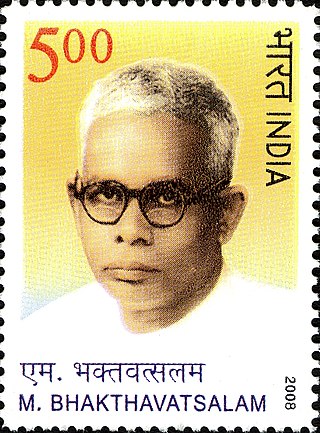
Minjur Bhakthavatsalam was an Indian independence activist and politician who served as the chief minister of Madras State from 2 October 1963 to 6 March 1967. He was the last Congress chief minister of Tamil Nadu and the last to have taken part in the Indian independence movement.

Ganapathy Dikshitar Subramania Iyer was a leading Indian journalist, social reformer and freedom fighter who founded 'The Hindu' English newspaper on 20 September 1878. He was proprietor, editor and managing director of The Hindu from 20 September 1878 to October 1898. Tamil language newspaper 'Swadesamitran' was also founded by him in 1882.
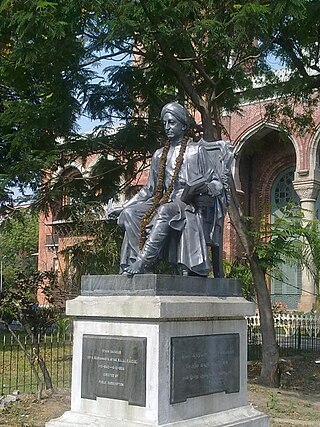
Sir Subbier Subramania Iyer was an Indian lawyer, jurist and freedom fighter who, along with Annie Besant, founded the Home Rule Movement. He was popularly known as the "Grand Old Man of South India".
Sir Panapakkam Anandacharlu CIE was an Indian advocate, freedom fighter and one of the early doyens of the Indian National Congress. He was the President of the Nagpur session of the Indian National Congress held in 1891.
C. Iyothee Thass was a prominent Tamil anti-caste activist and a practitioner of Siddha medicine. He famously converted to Buddhism and called upon the Paraiyars to do the same, arguing that this was their original religion. He also founded the Panchamar Mahajana Sabha in 1891 along with Rettamalai Srinivasan. Panchamas are the ones who do not come under Varna system; they are called as Avarna communities.

Dr. C. Natesa Mudaliar (1875–1937), also known as Natesan, was an Indian politician and activist of the Dravidian Movement from what is now the Indian state of Tamil Nadu. He was one of the founders of the Justice Party, along with P. Theagaraya Chetty and Dr. T. M. Nair. He is often mentioned as Dravida Thanthai.
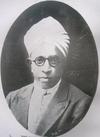
Tiruvengimalai Sesha Sundara Rajan (1880–1953) was an Indian medical doctor, politician and freedom-fighter who served the Minister of Public Health and Religious Endowments in the Madras Presidency from 1937 to 1939.

Rao Bahadur S. A. Saminatha Iyer, also known as Thanjavur Saminatha Iyer, was an Indian lawyer, landlord, politician and theosophist who served as Chairman of the Tanjore municipality and a delegate to the 1885, 1886, 1887, 1889 and 1894 sessions of the Indian National Congress. He spoke against salt tax in the first session conducted in 1885 and in 1887, was a part of a 32-member team that wrote the constitution of the Congress. Christopher Baker and D. A. Washbrook describe him as the "most celebrated spokesman of the Tanjore gentry".

Raja Sir Savalai Ramaswami Mudaliar (1840–1911) was an Indian merchant, dubash, politician and philanthropist who was known for his wealth. He was also one of the early leaders of the Indian National Congress.

The third legislative council election to Madras Presidency after the establishment of dyarchical system of government by the Government of India Act, 1919, was held in November 1926. Justice party lost the election to Swaraj Party. However, as the Swaraja Party refused to form the Government, the Governor of Madras set up an independent government under the leadership of P. Subbarayan and with the support of nominated members.
The Indian independence movement had a long history in the Tamil-speaking districts of the then Madras Presidency going back to the 18th century.
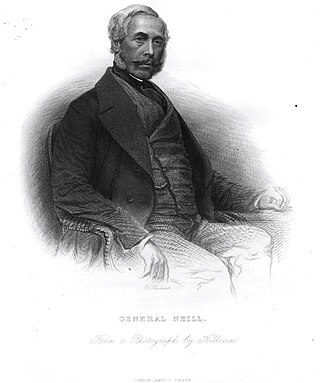
Neill statue Satyagraha was an agitation that took place in Madras Presidency, British India during the Indian Independence Movement. It took place in 1927 demanding the removal of the statue of Colonel James Neill situated at Mount Road in Madras.
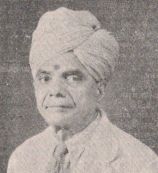
F. G. Natesa Iyer was an Indian activist in the Indian National Congress during the Indian independence movement. He was also one of the pioneers of modern Tamil drama and Tamil cinema. He was a talent scout who recognized merit and promoted many youngsters, who went on to become great performers in Carnatic music.













